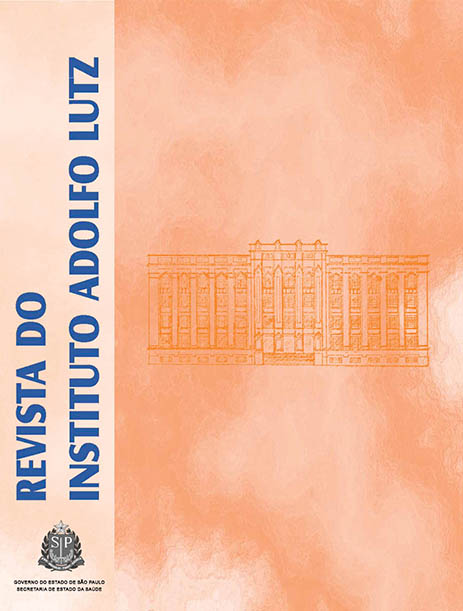Abstract
Fifty three individuals of four most commonly consumed fish species by the Cananéia city population, in São Paulo, Brazil, were analyzed to determine total mercury (Total Hg) and methylmercury (MeHg) levels, as well as, proximate composition and fatty acid profile. The muscle of three carnivorous species Centropomus parallelus (Fat snook), Macrodon ancylodon (King weakfish) and Micropogonias furnieri (Whitemouth croaker), and one planktivorous species Mugil platanus (Mullet) were analyzed. MeHg and Total Hg determinations were performed by Cold Vapour Atomic Absorption Spectrometry (CV AAS). Fatty acid profile was determined by gas chromatography (GC)whilst AOAC methods were used for proximate analysis. The total Hg results (interval) in wet weight basis were: Whitemouth croaker (114–442 μg kg-1), Fat snook (15-178 μg kg-1), King weakfish (12-100 μg kg-1) and Mullet (<10–25 μg kg-1), and none of the fish species exceeded the Brazilian legislation limits. MeHg values were below FAO/WHO (2007) recommendations. In nutritional terms, the results for proximate composition for all four fish species proved to be an excellent protein source with very low lipid content as was expected. Fatty acids of all fish species were adequate. Total polyunsaturated fatty acid contents varied from 21.9% (Micropogonias furnieri) to 26.4% (Mugil platanus). For the n-3 family, Macrodon ancylodon presented the highest value (20.9%) and Micropogonias furnieri the lowest one (15.8%). Mugil platanus (Mullet) species also showed good levels for all parameters analyzed and very low concentrations of contaminants, indicating it as a good nutritional choice in terms of risks and benefits.
References
1. Souza SMG, Anido RJ, Tognon FC. Fatty acids Omega-3 and Omega-6 in fi sh nutrition – sources and relations. Revista Ciências Agroveterinárias. 2007; 6(1): 63-71.
2. Burger J, Gochfeld M. Heavy metals in commercial fi sh in New Jersey. Environmental Research. 2005; 99: 403–12.
3. Anderson PD, Wiener JB. Eating fi sh. In: Graham JD, Wiener JB, editors. Risk versus Risk: Tradeoffs in Protecting Health and the Environment. Harvard, University Press, Cambridge, MA.,1995, p. 104–23.
4. Black EC. Blood levels of hemoglobin and lactic acid in some freshwater fi shes following exercise. J. Fish. Res. Bd., Canada.1955; 12 (6): 917 - 9.
5. Instituto Brasileiro de Geografi a e Estatística [IBGE], 2006. IBGE Cidades@. Site: http://www.ibge.gov.br. (Acesso em 11mar 2008).
6. Garcia TR. Impactos da implantação de uma cooperativa de produção de ostras junto a comunidades extrativistas caiçaras do litoral sul/SP: um estudo de caso [Tese de Doutorado]. São Paulo, Universidade de São Paulo, Faculdade de Zootecnia e Engenharia de Alimentos, 2005.
7. Farias LA, Santos NR, Fávaro DIT, Braga ES. Mercúrio total em cabelo de crianças de uma população costeira, Cananéia, São Paulo, Brasil. Cad. Saúde Pública, Rio de Janeiro. 2008; 24(10): 2249-56.
8. Figueiredo JL, Menezes NA. Manual de peixes marinhos do Sudeste do Brasil III. Teleostei (2). São Paulo: Museu de Zoologia, Universidade de São Paulo, 1980, 90p.
9. Horvat, M. Mercury analysis and speciation in environmental samples. In W. Baeyens et al (eds), Global and Regional Mercury Cycles: Sources, Fluxes and Mass Balances (NATO ASI Series, Partnership Sub-Series: 2), The Netherlands, Kluwer Academic Publishers, 1996, p.1-31.
10. Association of official analyst chemists. Official methods of analysis (AOAC). 16ª ed., 3ª rev. Gaitherburg: Published by AOAC International, 1997. v.2, cap. 32, p.1-43.
11. Bligh EG, Dyer WJ. A rapid method of total lipid extraction and purifi cation. Can. J. Biochem. Phys.1959; 37(8): 911-7.
12. Hartman L, Lago RCA. Rapid preparation of fatty acid methyl esters from lipids. Lab. Pract. 1973; 22: 475-7.
13. Brasil. Ministério da Saúde. Secretaria de Vigilância Sanitária. Portaria n0 695 1998. . Diário Ofi cial [da] República Federativa do Brasil, Brasília, DF, p.5-6, 30 mar.1998. Seção 1.
14. FAO-WHO Additives series: 58. Safety evaluation of certain food additives and contaminants. Sixty-seventh meeting of the joint FAO/WHO Expert Committee on Food Additives (JECFA), 2007, 337p.
15. Santos KMO, Aquino RC. Grupo dos óleos e gorduras, In: Philippi, S. T. (Org), Barueri: Manole editora, 2008. p. 241-92.
16. Rogero MM, Gomes MR, Tirapegui J. Lipídeos In: de Angelis, R. C.; Tirapegui, J. (Org) Fisiologia da Nutrição Humana Aplicada: Aspectos Básicos, Aplicados e Funcionais. São Paulo, Atheneu editora, 2007, p. 49-68.
17. Luzia LA. et al. The infl uence of season on the lipid profi les of fi ve commercially important species of Brazilian fi sh. Food Chemistry, Champaign. 2003, 83(1): 93-7.
18. Moreira AB. et al. Fatty acids profi le and cholesterol contents of three Brazilian Brycon freshwater fishes. Journal of Food Composition and Analysis, London. 2001;14(6): 565-74.
19. National Academic Press. Dietary reference intakes for energy, carbohydrate, fi ber, fat, fatty acids, cholesterol, protein, and amino acids (macronutrients). 1357p., 2005. Available from : http://www.nap.edu/catalog/10490.html. Accessed in January, 2009.
20. Tabela Brasileira de Composição de Alimentos (TACO 2) versão 2, 2a edição - Núcleo de Estudos e Pesquisas em Alimentação – NEPA, Universidade Estadual de Campinas – UNICAMP, Campinas, 2006.
21. USDA Nutrient Database for Standard Reference, Release 18 (SR18), http://www.ars.usda.gov/research/publications accessed in February, 2009.
22. Menezes MES, Lira GM, Omena CMB, Freitas JD, Sant’Ana AEG. Proximate composition, cholesterol and fatty acid of the fi shed species of estuarino Tainha (Mugil cephalus) and Camurim (Centropomus undecimalis) from Mundaú Lagoon, Al/Brazil. Rev Inst Adolfo Lutz. 2008; 67(2): 89-95.

This work is licensed under a Creative Commons Attribution 4.0 International License.
Copyright (c) 2009 Instituto Adolfo Lutz Journal
